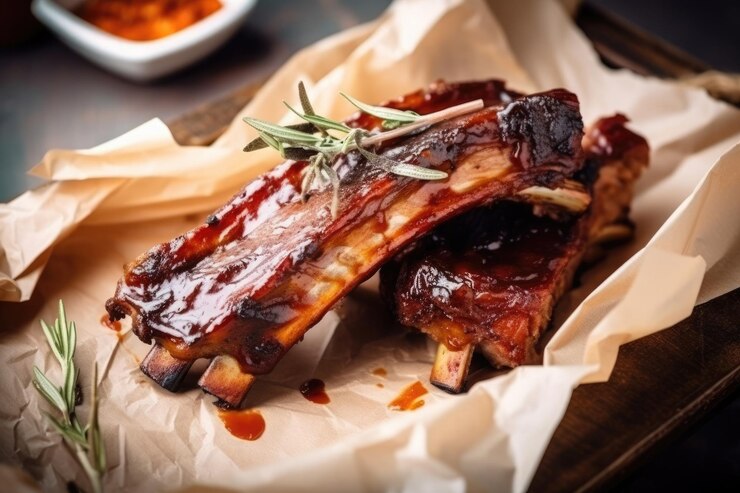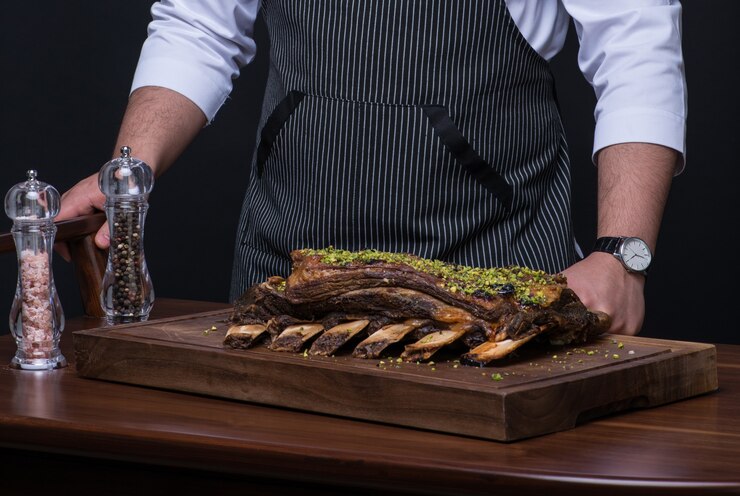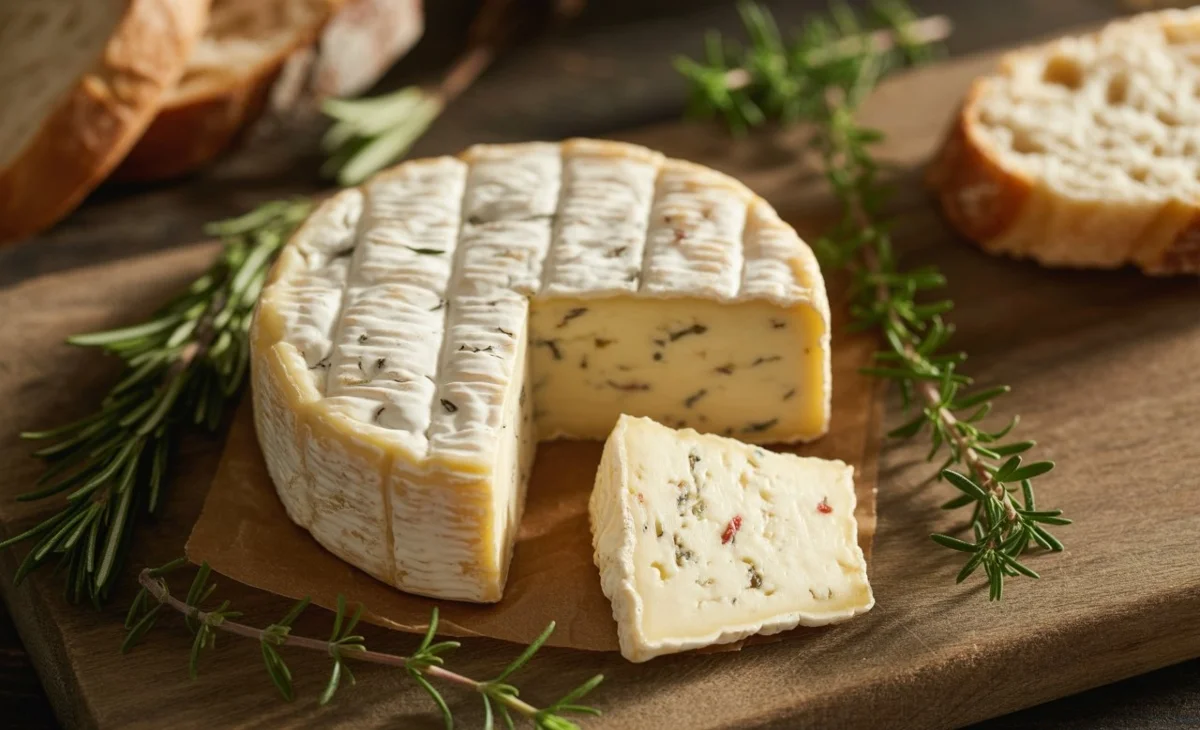Few things excite BBQ enthusiasts more than the sight of dino ribs on the grill. These massive beef ribs, resembling something a dinosaur might have gnawed on, are a carnivore’s dream. Known for their impressive size and rich, flavorful meat, dino ribs have earned a reputation as one of the most indulgent cuts for slow-cooked BBQ.
Whether you’re a seasoned pitmaster or a BBQ newbie looking to elevate your grill game, dino ribs are the perfect show-stopping dish to impress your guests. In this guide, we’ll explore what makes dino ribs so special, how to cook them to perfection, and why they’ve become a favorite at BBQ joints across the world.
What Are Dino Ribs?

Dino ribs, officially known as beef plate ribs or short ribs, come from the belly of the cow, just below the ribeye section. They get their nickname from their massive size, with bones that can be over 6 inches long and thick, beefy meat that clings to the bone, reminiscent of something you’d imagine a dinosaur enjoying. These ribs come from the “plate” section of the cow, specifically ribs six through eight.
Unlike pork ribs, which are more common in BBQ, beef dino ribs have a bolder, more intense flavor. They’re cut from the same area that gives us brisket, so you get a similarly rich and marbled meat that is perfect for slow cooking.
Types of Beef Ribs
There are a few different types of beef ribs, and it’s important to know which cut you’re dealing with before you start cooking:
- Plate Short Ribs (Dino Ribs): These are the big, meaty ribs that come from the lower part of the ribcage. Known for their size and flavor, plate ribs are the preferred cut for BBQ enthusiasts.
- Back Ribs: These come from the upper part of the cow near the spine. While still delicious, back ribs don’t have nearly as much meat on them as plate ribs, and they’re often less popular for BBQ.
- Chuck Short Ribs: These are smaller ribs that come from the shoulder area. They are also used for BBQ, though they’re not as massive or impressive as plate ribs.
For the true dino rib experience, you’ll want to go with plate short ribs, which are the largest and most flavorful.
Why Are Dino Ribs So Popular?

The growing popularity of dino ribs can be traced to several key factors:
- Size: Dino ribs are massive, often weighing 1 to 2 pounds per rib. This makes them a visually impressive dish and perfect for sharing at BBQs or parties.
- Flavor: The meat on dino ribs is marbled with fat, which melts during the cooking process, infusing the meat with flavor. When cooked low and slow, they develop a deep, smoky taste that BBQ lovers crave.
- Texture: When prepared correctly, the meat on dino ribs becomes incredibly tender, often described as “fall-off-the-bone” tender. The rich, gelatinous fat content in these ribs ensures a moist, juicy bite every time.
How to Choose the Best Dino Ribs
Selecting the right dino ribs is key to creating the perfect BBQ dish. Here’s what to look for when buying your ribs:
- Marbling: Just like with steak, you want ribs with good marbling (the fat streaks running through the meat). This fat will render down during cooking, adding flavor and moisture to the meat.
- Bone Size: The larger the bones, the more impressive the presentation will be. Dino ribs are known for their size, so look for ribs with long, thick bones.
- Meat Thickness: You want ribs that have a generous amount of meat on them. Avoid ribs where the meat is cut too close to the bone, as they won’t be as satisfying or juicy.
When shopping for dino ribs, don’t be afraid to ask your butcher for help. Many butchers can cut dino ribs to order, ensuring you get exactly the amount of meat and bone you need for your BBQ.
How to Cook Dino Ribs Step-by-Step Guide

The key to making perfect dino ribs is cooking them low and slow. This allows the tough connective tissue and fat to break down, resulting in tender, flavorful meat that falls off the bone. While there are various methods to prepare dino ribs, smoking is by far the most popular and traditional way to achieve BBQ perfection.
Ingredients:
- 3 to 4 dino ribs (beef plate ribs)
- 1/4 cup kosher salt
- 1/4 cup coarse ground black pepper
- 1 tablespoon garlic powder
- 1 tablespoon paprika (optional, for added color)
- Wood chunks for smoking (oak, hickory, or mesquite work well)
Instructions:
1. Preparing the Ribs
Start by trimming any excess fat or silver skin from the ribs. While you want to keep some fat for flavor, trimming away the tough silver skin ensures that your seasoning and smoke penetrate the meat more effectively.
2. Season the Ribs
In a small bowl, mix together the salt, pepper, garlic powder, and paprika. Generously coat the ribs with the seasoning mixture, making sure to cover all sides. Let the ribs sit at room temperature for about 30 minutes while you prepare your smoker.
3. Prepare the Smoker
Preheat your smoker to 225°F (107°C). For the best flavor, use wood chunks like oak, hickory, or mesquite. These hardwoods impart a deep, smoky flavor that complements the richness of the beef.
4. Smoking the Ribs
Place the ribs bone-side down in the smoker. Close the lid and let them smoke for about 6 to 8 hours, depending on the size of the ribs. You’re aiming for an internal temperature of 200°F to 205°F (93°C to 96°C). This is the temperature where the collagen and fat have fully broken down, resulting in tender, juicy meat.
5. Rest the Ribs
Once the ribs reach the desired temperature, remove them from the smoker and wrap them in aluminum foil. Let the ribs rest for at least 30 minutes. This resting period allows the juices to redistribute throughout the meat, ensuring a moist and flavorful bite.
6. Serve and Enjoy
Slice the ribs between the bones and serve. The meat should be tender enough to pull apart easily with a fork, and the deep smoky flavor will be irresistible.
Other Methods for Cooking Dino Ribs
While smoking is the most popular method for cooking dino ribs, you can also achieve excellent results using other techniques:
- Oven-Baked Dino Ribs: If you don’t have a smoker, you can cook diino ribs in the oven. Follow the same seasoning steps and bake the ribs low and slow at 275°F (135°C) for 4 to 5 hours, or until the meat is tender.
- Grill with Indirect Heat: If you have a charcoal or gas grill, you can use the indirect heat method to cook the ribs. Set your grill to around 275°F (135°C), place the ribs on the cooler side, and cook them slowly for several hours until tender.
Pairing Dino Ribs with the Perfect Sides
Dino ribs are rich and flavorful, so it’s a good idea to pair them with sides that complement and balance the meal. Here are some classic BBQ sides that go perfectly with dino rib:
- Coleslaw: A refreshing, crunchy slaw can cut through the richness of the beef and provide a nice contrast in textures.
- Baked Beans: Sweet and smoky baked beans are a traditional BBQ side that pairs well with the deep flavors of the ribs.
- Cornbread: A warm slice of cornbread adds a touch of sweetness and can be used to soak up any leftover juices from the ribs.
- Grilled Vegetables: Charred veggies like asparagus, bell peppers, and zucchini offer a healthy, lighter accompaniment to the ribs.
FAQs
What are dino ribs?
Dino ribs are massive beef plate ribs cut from the belly of the cow, below the ribeye. They’re named for their size, which is reminiscent of something a dinosaur might eat, and they’re popular for their rich flavor and tenderness when cooked low and slow.
How long do dino ribs take to cook?
Dino ribs usually take about 6 to 8 hours to cook when smoked at a low temperature (225°F). The key is to cook them slowly so the connective tissues break down, resulting in tender, fall-off-the-bone meat.
Can I cook dino ribs in the oven?
Yes! If you don’t have a smoker, you can bake dino ribs in the oven at 275°F for 4 to 5 hours. While they won’t have the same smoky flavor, they’ll still be delicious and tender.
How do I know when dino ribs are done?
Dino ribs are done when the internal temperature reaches 200°F to 205°F. At this point, the collagen and fat will have broken down, making the meat tender and juicy.
What’s the best wood for smoking dino ribs?
Oak, hickory, and mesquite are all excellent choices for smoking dino rib. These hardwoods provide a deep, smoky flavor that complements the richness of the beef.
Do dino rib need to rest after cooking?
Yes, after cooking, it’s important to let the ribs rest for at least 30 minutes. This helps the juices redistribute, ensuring the meat stays moist and flavorful.
Conclusion
Dino ribs are a BBQ delicacy that combines impressive size with incredible flavor. Whether you’re slow-smoking them to perfection or baking them in the oven, the rich, tender meat will make any meal feel like a special occasion. With their dramatic presentation and mouthwatering taste, diino ribs are the ultimate treat for BBQ enthusiasts and meat lovers alike. Perfect for sharing or indulging in on your own, these ribs are sure to be the star of your next cookout.











